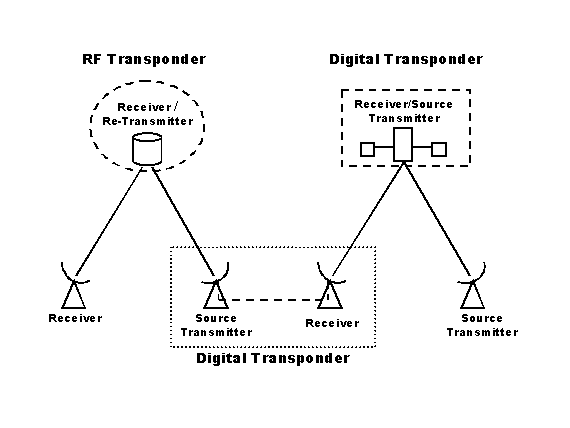Use transmitters to model the originating node of a communications link and define fundamental parameters for the link, such as data rate and modulation types. You can also use them to model the transmitter portion of digital transponders. Retransmitters model RF signal repeaters, which translate the carrier frequency and boost the RF signal power and noise received. Use them to modify a received signal and retransmit it.
You should note the frequency of the transmitter and the frequency conversion rate set in the re-transmitter to ensure that the down converted frequency does not result in a negative or zero frequency.
Any communications link analysis scenario must contain at least one transmitter.
Analog (RF) and Digital (Regenerative) Transponders
Retransmitters can be used to model analog (RF) transponders. A scenario with the chain transmitter - receiver/retransmitter - receiver will model a single-hop analog transponder, while a scenario with the chain transmitter - receiver/transmitter - receiver will model a single-hop digital (regenerative) transponder, as illustrated below:

For further details, see How to Model a Transponder.
In a multi-hop link, RF transponders and digital transponders can be mixed freely.
Retransmitters model analog repeaters/(bent pipe) transponders, while receivers/transmitters carry out the demodulation/re-modulation of a signal, respectively.